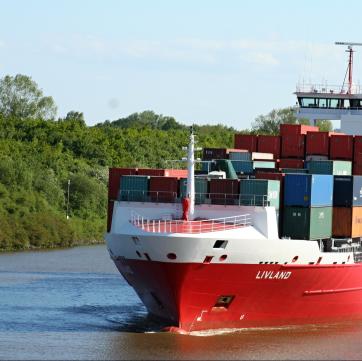
In the process of shipping, to ensure the safety of goods needs to be taken from many aspects, the following are some common measures:
Cargo packing
Select the appropriate packaging materials: according to the characteristics of the goods to choose packaging materials, such as fragile products with foam, bubble cushion and other buffer materials wrapped, then loaded into a strong carton; Liquid cargo should be packed in well-sealed containers and reinforced with wooden cases.
Ensure firm packaging: properly fix and tie the goods to prevent damage due to shaking and collision during transportation. For example, for large mechanical equipment, it is necessary to fix it in the container with steel tape or wire rope.
Container selection and inspection
Select the right container: Select the right type and size of container according to the type, quantity and characteristics of the cargo. If refrigerated cargo requires reefer containers, bulk cargo containers may be used for bulk cargo.
Strictly check the container: Before packing, carefully check the integrity of the container, including whether the door can be closed and sealed normally, and whether the box is damaged, porous, deformed, etc., to ensure that the waterproof, moisture-proof and anti-theft performance of the container is good.
Cargo handling operation
Standardized loading and unloading process: Stevedores must strictly follow the operation specifications and use appropriate loading and unloading equipment, such as forklifts and cranes, to avoid rough loading and unloading and to prevent damage to goods due to falls and collisions.
Reasonable loading of goods: according to the weight, volume and nature of the goods, reasonable arrangement of the goods in the container or cabin position, to achieve heavy and heavy collocation, center of gravity balance, to prevent the goods in the transport process of displacement, collapse.
In-transit monitoring
Real-time positioning and tracking: Through satellite positioning system, automatic ship identification system (AIS) and other technical means, real-time positioning and tracking of the ship, timely grasp the ship's sailing position, speed, heading and other information, so that in the event of abnormal conditions can be quickly taken measures.
Cargo status monitoring: For some goods with special requirements for transportation conditions, such as temperature and humidity sensitive goods, monitoring equipment can be installed in the container to monitor the environmental parameters of the goods in real time, once the parameters are abnormal, timely adjustment or processing.
Insurance cover
Take out adequate insurance: Shippers should take out adequate Marine cargo insurance according to the value of the goods and the risk of transportation. Insurance coverage can cover the risks of loss, damage, delay, etc., so as to be able to obtain financial compensation in the event of an accident to the goods and reduce losses.
Understand the insurance terms: Before buying insurance, the owner should carefully read the insurance terms, understand the insurance coverage, disclaimer clauses, claims process and other important information, to ensure that when the need to settle claims can be successfully compensated.
Laws and regulations and contract constraints
Compliance with relevant laws and regulations: Shipping companies and shippers should abide by the relevant laws and regulations of international shipping, such as the Hague Rules, Visby Rules, Hamburg Rules, etc., to clarify the rights and obligations of all parties and ensure the legality and standardization of cargo transport.
Sign a detailed contract: In the shipping business, the cargo owner and the shipping company should sign a detailed contract of transport, which specifies the transport route of the goods, the transport time, the mode of delivery of the goods, the division of responsibilities, the compensation standard and other terms, so as to bind the behavior of both parties in the form of a contract and ensure the safety of the goods.

